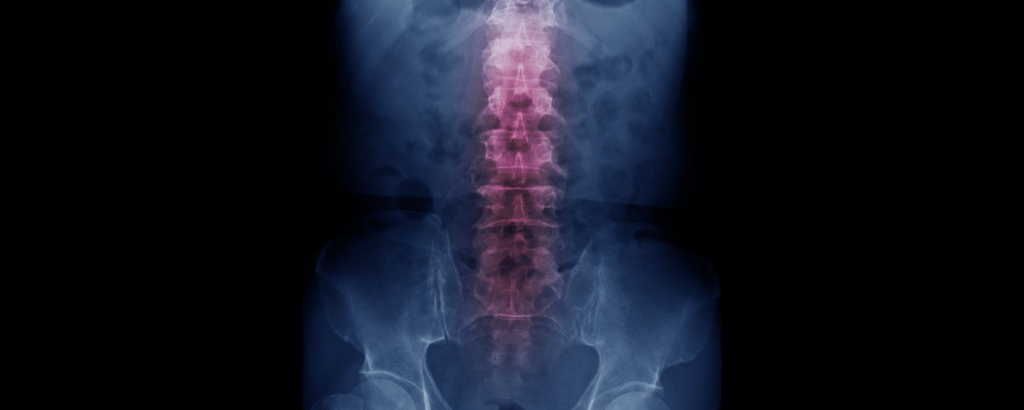FREE Shipping on Orders over $89 with Account – Create One Today!
- (844)-859-9400
- Get Help

Individuals who experience a spinal cord injury are often in a state of shock, and may understandably feel a strong sense of sadness, anger and remorse. Yet, as rehabilitation progresses, it becomes necessary to develop a routine addressing their personal care and potential secondary injuries.
The spinal cord is a long column of nerves passing from the brain to the lower back and through the spinal canal. It provides an integral function, transmitting signals between your brain and everything else, influencing tactile sensation and the operation of limbs and organs.
Each year, about 17,000 spinal cord injuries occur, according to figures from the American Association of Neurological Surgeons. At least half occur in teens and young adults (ages 16 to 30) and the majority involve male patients. Causes involve a sharp and forceful impact to the spine, possibly from a fall, car accident or athletic incident, but can also include infections or a condition like spina bifida.
An injury affecting the middle of the back may result in paraplegia, which affects how the legs function. An injury to the neck can result in quadriplegia, which affects not only the legs but also the arms and chest.
Naturally, the severity of these injuries will vary. Severity is divided by practitioners into two major categories — complete and incomplete. Complete spinal injuries eliminate all sense of feeling and movement below the area of injury. For an incomplete injury, the patient will have some sensation and may be able to move the area partially, and may recover other bodily functions with time.
The patient will receive medical attention to preserve the spine and spinal cord as well as to prevent additional damage. At this stage, they’ll receive testing, including imaging, to determine how well they sense touch and to assess the strength of their muscles. These factors assist with establishing the severity of the injury.
Once a patient starts to stabilize, they undergo rehabilitation. For patients, rehabilitation serves two key roles: assisting with recovery and helping to avoid secondary injuries. Physical, occupational and recreation therapists will be brought in, along with a dietician and social worker, to begin recovery.
Therapy may entail:
– Strengthening and working existing muscle functions, so they don’t atrophy.
– Rediscovering fine motor skills that may have been temporarily lost.
– Learning adaptive behaviors to help with everyday tasks.
– Preventing complications, like pressure ulcers and UTIs.
– Addressing diet to strengthen muscles and keep bodyweight in check.
– Learning how to manage bladder and bowel systems.
– Learning how to use mobility devices, like a wheelchair.
– Anticipating and responding to secondary conditions, including muscle spasms, chronic pain, deep vein thrombosis, respiratory infections and autonomic dysreflexia.
The goal of rehabilitation is to maintain quality of life and independence, allow the patient to return to school or work and continue participating in favorite activities.
The majority of recovery occurs within the first six months to a year. Patients are also more vulnerable to secondary injuries during this period. As a result, follow-up visits and testing should be expected to monitor spine and bladder functions.
Rehabilitation provides the tools to adapt to life with a spinal cord injury. During recovery, patients are advised to:
– Continue educating themselves about their injury.
– Modify their home and car to better get around, rather than find themselves restricted to a single space. Modifications may include ramps, grab bars, lower sinks and wider doors where necessary.
– Look into economic assistance or state-level support, even if temporary.
From the start of rehab through returning to work, developing a daily routine can provide order and a clear sense of structure to the patient’s life. This can involve:
– Finding time to participate in hobbies or extracurricular activities.
– Understanding when support is needed, including emotional assistance from family and friends.
– Learning what requires the assistance of a caretaker. For instance, the patient may be able to get in and out of their home and go to work, but may need assistance with washing or dressing.
– Following a bladder and bowel management program. For most patients, this involves learning how to and regularly performing intermittent catherization, although often there is room to explore various solutions, from condom catheters to transurethral and suprapubic catheters. In certain situations the patient may also undergo an ostomy procedure, to make bowel function more easily manageable.
Sources:
https://www.uofmhealth.org/health-library/ug2580
https://www.180medical.com/blog/8-tips-for-adapting-after-a-spinal-cord-injury/
https://www.mayoclinic.org/diseases-conditions/spinal-cord-injury/diagnosis-treatment/drc-20377895
https://www.medicalnewstoday.com/articles/spinal-cord-injury-recovery#statistics
https://patientcaremedical.com/catheterization-for-spinal-cord-injuries/
